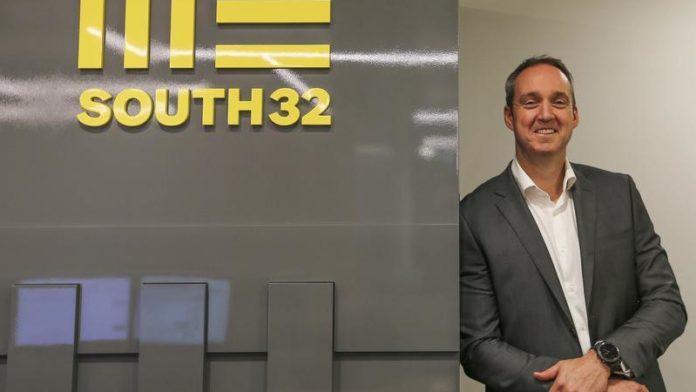
GLOBAL diversified minerals group South32 is investigating the viability of sourcing continuous renewable power for its massive Hillside aluminium smelter once its 10-year pricing contract with Eskom expires, CEO Graham Kerr said on Thursday.
This is owing to a rise in power costs in South Africa over the next decade and that the smelter is a major contributor to the group’s Scope 2 carbon emissions. Most of Eskom’s power is generated from coal. Future demand for aluminium, particularly from Europe, will be influenced by how “green” the production process is, said Kerr.
South32 has raised its targets for reducing carbon emissions, aiming for a 50% cut in scope 1 and 2 emissions by the 2035 financial year, but this will not be a capital-intensive transition. CFO Katie Tovich said South32 was not planning to be an energy producer and would not be using its balance sheet to fund renewable power generation at Hillside.
Kerr was speaking after the group released annual results in which it more than doubled the total dividend to 4.9 US cents a share for the year to end-June 2021 (2020: 2.1c). It also paid a special dividend of two cents a share.
It will also continue its share buybacks into 2022.
The payouts were made possible by strong free cash flows from its portfolio of aluminium and alumina, manganese, metallurgical coal, silver, zinc, lead and nickel.
Underlying earnings rose 153% to $489m, excluding some hefty impairments on Illawarra Metallurgical Coal and a $159m loss on the sale of SA Energy Coal (SAEC) to Seriti Resources, which was effective from June. The sale of SAEC will benefit South32’s future finance costs, depreciation and average tax rate.
Kerr said despite the increase in the global thermal coal price, he believed the decision to sell SAEC was correct. “I don’t want to be in thermal coal in SA.”
Together, Hillside and Mozal contributed almost a third ($391m) of South32’s total underlying EBIT of $1.2bn in this period. The stronger rand limited profit growth from both smelters, and Hillside also faced higher energy costs after renegotiating its pricing agreement with Eskom, which has been effective since August last year. But these costs were largely offset by cheaper raw material inputs.
Electricity tariff
South32 COO, Mike Fraser said the group’s energy cost at Hillside would be about $100 a ton of aluminium more under the new 10-year Eskom pricing agreement, which is linked to the rand and South African inflation. The previous long-standing power contract was linked to the US dollar and the aluminium price on the London Metal Exchange.
The new electricity tariff was in line with the cost of energy at Mozal and Hillside is likely to remain profitable through the cycle.
Fraser said South Africa was moving to deregulate the energy grid, while trying to sustain energy intensive industries, which creates an opportunity for Hillside as the grid needed intensive users to sustain base load demand. “The key issue for us is to work with Eskom and regulators to manage this transition,” he said.
Fraser said it was not envisaged that renewable power would be more expensive than Eskom power in ten years’ time.
The rising cost of thermal coal is pushing real inflation in Eskom’s power costs while the rapid learning rates of solar, wind and battery storage technologies are making them more cost-competitive. Being able to secure competitive, green power would ensure that the aluminium smelters remained sustainable in the long term, he said.











